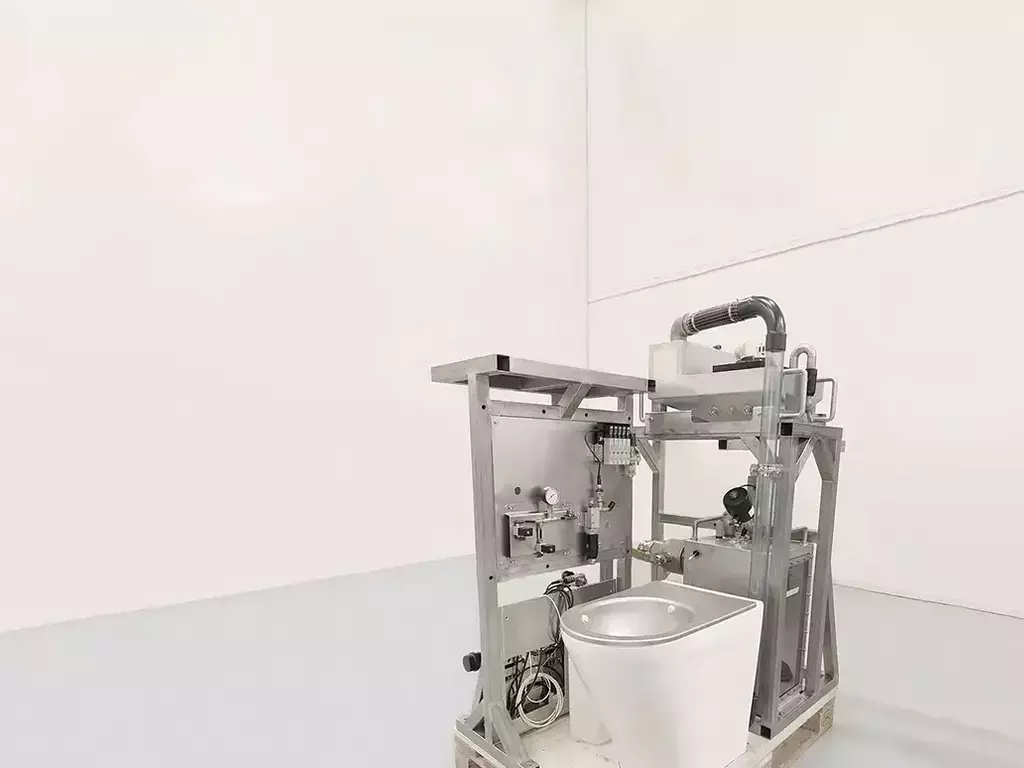SUSTAINABLE DEVELOPMENT GOALS (SDG'S)

Driving sustainability through electrochemical water cleaning at the source
Addressing the global water crisis
Clean water sources worldwide are rapidly becoming scarce due to pollution, overuse, and climate change. For companies, especially in resource-intensive industries, water scarcity and pollution may disrupt operations, increase costs, and limit growth. For communities, the global water crisis may lead to heightened health risks, food security and poverty. Responsible water management is hence more important than ever. By adopting state-of-the-art water treatment technologies based on the newest academic insights, companies can lead the way in safeguarding this precious resource, fulfilling social responsibility while driving business growth.

Electrochemical water treatment: a game changer
Electrochemical water treatment is one of those technologies that are revolutionizing waste water management. Despite its name, this treatment requires no chemical additives. Thus, the treated water can be easier reused in the production processes. The technology also allows for a fully automatized dosage procedure and autonomously operating units on electrical input that can be conventiently switched on or off, avoiding unnecessary treatment. Furthermore, the solution’s compact nature allows seamless integration into existing production lines, reducing the need for end-of-pipe waste water treatment.
Even better, the technology comes with specific benefits for various types of industries. Using special electrodes in food processing, e.g., may reduce bacterial growth and result in an extended best-before date, whereas in the metallurgical industry, electrochemistry effectively removes heavy metals and contaminants such as cutting oil.
Advancing the Sustainable Development Goals
SDG 9:
Industry, innovation & infrastructure
Electrochemical water treatment aligns with SDG 9 by fostering innovative, sustainable industrial practices. It optimizes water (re)use, reduces raw material waste, increases productivity, all in all making industries cleaner, more resilient and resource-efficient.

SDG 12:
Responsible consumption & production
This innovative technology also supports SDG 12 by, e.g., reducing (cross) contamination risks in food processing and eliminating the need for chemicals. The technology can furthermore help extend product shelf life and minimize waste through the supply chain.

SDG 6:
Clean water and sanitation
Thanks to this technology, illegal discharge of contaminated water into the environment can be eliminated. It is also highly water-efficient, helping to conserve precious fresh water for drinking. Easily adaptable to various environments, it can help stop open defecation and improve hygiene standards.

Through integrating electrochemical water treatment into their industrial processes, manufacturing companies can drive progress across various SDGs

Real-world impact

A case study in food processing
Food processing companies turn to traditional solutions such as using water to flush bacteria away, or cooking or refrigerating food. One food processing company decided to move away from traditional solutions and instead implemented electrocoagulation in one of its chiller processes.

Electrochemical treatment requires no added chemicals.
It uses electricity to purify
water and proves to be
highly efficient.
KEY ADVANTAGES OF ELECTROCHEMICAL WATER TREATMENT

Chemical-free
Despite its name, electrochemical treatment requires no added chemicals. Instead, it uses electricity to purify water through two key mechanisms:
- Electrocoagulation – An electric current activates sacrificial electrodes, generating metal ions that form metal hydroxides. These compounds bind to and remove pollutants, eliminating the need for flocculants.
- Electrooxidation – An electric current is applied on inert electrodes, generating powerful oxidizing agents. These prove to be highly effective at breaking down micropollutants, PFAS, and nitrogen, and improving biodegradability (BOD/COD ratio).

High efficiency
Electrochemical treatment proves to be highly efficient on various levels:
- Energy consumption – Energy requirements may vary by industry, region and client needs. Electrochemical treatment offers the decisive advantage of generating multiple effects simultaneously, such as removing heavy metals, oil, and suspended solids in metallurgical processes.
- Waste water characteristics – Unlike biological treatments, electrochemical treatment works effectively across a wider temperature range and handles fluctuations in concentrations and flow rates more efficiently.

Conclusion
Electrochemical water treatment offers a smart, sustainable solution for industries looking to reduce environmental impact while improving efficiency. By eliminating chemical additives, optimizing water reuse, and improving overall efficiency, this game changing technology helps businesses cut costs and enhancing operational resilience while directly contributing to global sustainability efforts.
As water scarcity and pollution continue to challenge industries and communities worldwide, investing in innovative solutions such as electrochemical water treatment not only safeguards business continuity but also strengthens a company’s role as a responsible steward of natural resources.
By integrating this technology into their CSR strategies, businesses can demonstrate their commitment to sustainability while enhancing their reputation and long-term viability. Thus, industries can turn sustainability into a competitive advantage, proving that environmental responsibility and business success go hand in hand.
